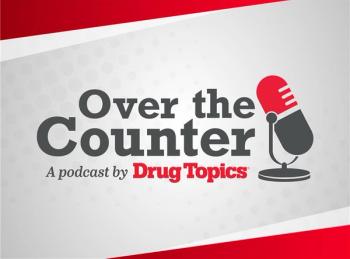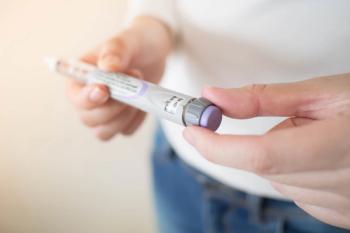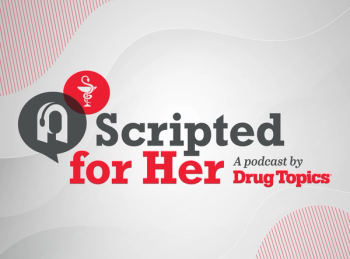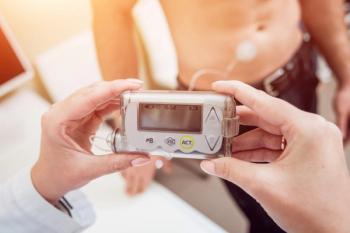
Zero co-pay generic programs expected to rise
Generic supplements zero copay programs
Zero co-pay generic programs expected to rise
Health plans are beginning to entice subscribers to make the switch to generics by offering zero initial co-pays for these products. Many pharmacists endorse the simplicity of the zero copay idea compared with the more complex multitier system involving different amounts for generics versus brands.
"Blue Cross Blue Shield of Michigan [BCBSM] conducted a six-month pilot program (Jan. 1-June 30, 2002) aimed at waiving the initial copayment for members who switched from brand-name to generic drugs at community pharmacies," explained Atheer Kaddis, director, pharmacy services, clinical, at BCBSM.
"Our BCBSM program targeted 25 of the highest- prescribed brand-name drugs that have generic versions available (also called multisource brand drugs) during the last six months of 2001. Coupons were mailed to about 7,000 members, along with a cover letter explaining the program," he said. In the letter, members were instructed to take the coupon, along with a prescription for a branded drug, to their local pharmacy and ask if the generic drug could be dispensed. If the generic drug was dispensed, the member didn't have any out-of-pocket cost for the prescription.
Under the pilot program, BCBSM mailed the coupons to 6,914 members. Three-quarters of them (5,193) used the pharmacy benefit during the pilot time period. Slightly over a quarter of the members (1,359) had a target generic prescription filled during the pilot time period, with 12% using a coupon.
"We are excited about our results for this pilot program," Kaddis said. "Regarding cost savings for members who used the coupons, there was a total savings of $23,000 and a co-pay cost to the plan of $6,700 [the ROI was 3 to 1]." He noted that among those members who switched to a generic drug, 96.6% stayed on the generic drug during the pilot time period.
BCBSM has at least one employer group with a zero dollar copay- ment for generic drugs. The company's benefit design is 20% co-insurance for brand drugs/$0 copayment for generic drugs. In 2001, the generic dispensing rate for the employer group was 42.2%. The overall BCBSM health plan rate was 37.9%. That rate has been climbing steadily since the company launched a generic promotional campaign in 2001, and it is now at 39.3 %.
"There were other groups with higher generic dispensing rates in 2001," said Kaddis. "One of our groups with a mandatory generic program (benefit design was $30 brand/ $15 generic for copays) had a generic dispensing rate of 47.7% in 2001."
Providing consumer incentives to use generic drugs helps relieve the healthcare provider of time spent trying to convince the patient to use cost-effective, quality prescriptions, according to Kaddis. Consumer incentive plans also help healthcare providers that participate in risk-sharing programs with managed care organizations. "This type of plan helps to address healthcare cost trends, which is the goal of all involved in the healthcare market today," he said.
Zero co-pay, or other similar incentive plans, can translate into a win-win situation for subscribers and payers. Subscribers benefit because the program provides an incentive for the subscriber to use the cost-effective medications, which saves out-of-pocket costs in both the short and the long term without affecting quality. Payers win by managing their drug expenditures.
"If healthcare cost trends can be managed, the goal is to reduce the cost of health care for everyone. This is a step in the right direction," Kaddis said.
He added that he has heard of some pharmacy benefit managers and health plans creating similar zero co-pay programs. "I am hoping that their programs are also successful as I believe in this strategy to promote generic drugs."
Another experience
Another health plan that has tested zero co-pays for generics is WellPoint Health Networks. Wellpoint, which has more than 13 million medical members and approximately 45 million specialty members nationwide through Blue Cross of California, Blue Cross and Blue Shield of Georgia, Blue Cross and Blue Shield of Missouri, HealthLink and UNICARE, has launched a pilot program whereby select generic drugs are available at no co-pay for the initial prescription.
"We launched this program with generic Mevacor and its branded equivalent, Mevacor. We basically had a 0% market share on cholesterol-lowering drugs. Through a focused consumer/ marketing campaign and physician education on the merits of generic Mevacor, we have taken the use of generic Mevacor to 4%," said Robert Seidman, v.p. of pharmacy at Wellpoint.
Most of the switched prescriptions to generic Mevacor came from Lipitor, Zocor, and Pravachol. "For generic Mevacor, every 1% increase saves the healthcare provider $500,000 a year," Seidman explained. "Our goal is to build on our experience with generic Mevacor with other generic drugs, using similar campaigns."
The pilot program, which started in the beginning of 2002 after generic Mevacor became available in December 2001, is still under way. Members have been sent a letter informing them of the program and the benefits of the generic drug.
"Through this campaign, we have modified the patient-physician dialogue. Our members are carrying this letter with them into the physician's office and asking about generic Mevacor," he said.
Doctors have responded positively, according to Seidman, who said that he believes WellPoint is working to protect the affordability of the prescription drug benefit and continuing to provide broad access to pharmaceuticals.
"Our critical message is for patients to ask their doctor if generic Mevacor is right for them," he said. "We are continuing to communicate with our members and our physicians. I don't see the program ending."
The next level
The pharmaceutical industry has spent billions of dollars a year on pharmaceutical market-ing and promotion; yet no one has ever spent the time or money promoting the "gold standard" generic drugs, according to Seidman.
"In our armamentarium, we now have gold standard generic drugs in all the critical therapeutic classes that are responsible for our prescription drug trend," he said. "If we are able to encourage our members to engage in discussions with their physicians and pharmacists on the role of generic drugs, then we will have contributed mightily to the affordability of health care."
Lisa B. Samalonis
The author is a medical writer based in New Jersey.
Lisa Samalonis. Zero co-pay generic programs expected to rise. Drug Topics 2002;25:10s.
Newsletter
Pharmacy practice is always changing. Stay ahead of the curve with the Drug Topics newsletter and get the latest drug information, industry trends, and patient care tips.























































































































